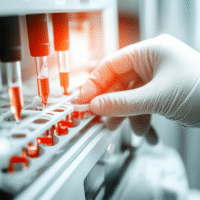Biofeedback’s Impact on Orthosis Use for Ankle Fractures
Study Overview
This study explores how well patients follow post-surgery instructions for ankle fractures, especially regarding weight bearing (15-30 kg) and using orthoses. We monitored 84 patients over six weeks using pressure-sensitive insoles to track their compliance and load frequency.
Key Findings
Participants were asked to limit their weight bearing to 15-30 kg while using a lower leg orthosis with insoles that recorded daily step counts and maximum loads. The study had two groups:
- Control Group: No biofeedback provided.
- Intervention Group: Received audiovisual feedback when loads exceeded 20 kg.
Results showed low adherence to weight bearing and orthosis use in both groups. By week three, only 10% of the control group used the orthosis, and overload was noted as early as week one. However, the group receiving biofeedback showed significant improvement, with orthosis use rising from 29.1% to 57.4%.
Practical Solutions and Value
This study highlights the importance of continuous biofeedback in improving adherence to rehabilitation protocols after ankle fractures. By incorporating biofeedback, we can enhance patient compliance, ultimately leading to better recovery outcomes.
Enhancing Clinical Practice
Clinical trials are essential for developing effective treatments. Our AI-driven platform, DocSym, makes it easier for clinicians to access vital information by integrating ICD-11 standards, clinical protocols, and research into one user-friendly resource.
In a fast-paced healthcare environment, our mobile apps help streamline operations by supporting scheduling, treatment monitoring, and telemedicine. This not only simplifies patient care but also expands digital services.
By leveraging AI, clinics can improve workflows, enhance patient outcomes, and reduce paperwork. Discover how we can assist you at aidevmd.com.































